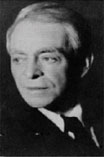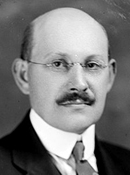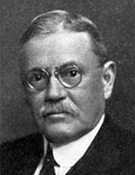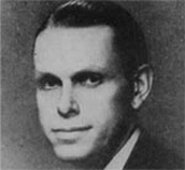History of Supplements:
 Ancient cultures understood the principle that a life force within the foods of nature could maintain human health and even restore it.
Ancient cultures understood the principle that a life force within the foods of nature could maintain human health and even restore it.Our understanding of this principle took a quantum leap forward in 1747, when a Scottish naval surgeon, James Lind, discovered that an unknown substance in lemons, limes and several other fruits and vegetables prevented scurvy, which was a serious problem for sailors of that period. This nutrient would eventually become identified as vitamin C.
 In the 1860s Louis Pasteur demonstrated that many diseases were linked to microscopic organisms.
In the 1860s Louis Pasteur demonstrated that many diseases were linked to microscopic organisms.
Soon after, the concept of infection caused by “germs” became the basis of the Western theory of medicine and disease.
At this time beriberi and pellagra were believed to be infectious diseases.
Many discoveries of the effect that vitamins have upon human health began developing around 1905 with the studies of a young English doctor, William Fletcher.

Fletcher’s experiments prove his theory (there are special nutrients contained in the husk of the rice that could prevent beriberi) and this leads to the discovery of vitamin B-1 (Thiamine) and other B vitamins.
 In 1912, while working at the famed Lister Institute in London, the 28-year-old Polish-born biochemist Casimir Funk took Fletcher's thinking a few steps further.
In 1912, while working at the famed Lister Institute in London, the 28-year-old Polish-born biochemist Casimir Funk took Fletcher's thinking a few steps further.
Funk coined the term “vit-amine,” which he defined as important substances in food that are vital for life – “vita” meaning life and “amine” from nitrogen compounds found in the thiamine (vitamin B-1).
In 1912, vitamin C was rediscovered and identified by Norwegians A. Hoist and T. Froelich, and in 1935 it became the first vitamin to be artificially synthesized by a process invented by Dr. Tadeusz Reichstein of the Swiss Institute of Technology in Zurich.
In 1922, University of California researchers Herbert Evans and Katherine Bishop discovered vitamin E in green leafy vegetables. It acts to protect our cells against the effects of free radicals. D. T. Smith and E. G. Hendrick discovered B2, also known as riboflavin, in 1926.
In 1932, the Hungarian biochemist Albert Szent-Györgyi, M.D., Ph.D., isolated a substance he called hexuronic acid (later known as ascorbic acid) in the adrenal glands. At around the same time, W.A. Waugh and Charles King isolated a vitamin from lemon and showed that it was nearly identical to hexuronic acid.

 In 1933, Thomas Osborne and Lafayette Mendel conducted experiments at Yale University and determined that butter (which we do not consider a human food), contained a factor necessary for natural growth and development. This factor became known as fat-soluble vitamin A. It was synthesized in 1947.
In 1933, Thomas Osborne and Lafayette Mendel conducted experiments at Yale University and determined that butter (which we do not consider a human food), contained a factor necessary for natural growth and development. This factor became known as fat-soluble vitamin A. It was synthesized in 1947.
In 1933 a scientist working for the pharmaceutical corporation Hoffman-LaRoche (now known simply as Roche) succeeded at making a synthetic vitamin C by isolating ascorbic acid. Cow's milk was found to contain growth-promoting factors, which include the water-soluble multiple vitamin B family. Before the 1930’s it was only known as “B” vitamin. Now we know it as the “B-complex” family of multiple B vitamins.
In the 1930s, a flurry of scientific discovery demonstrated the biochemical functions of various vitamins and established the body's requirements for them. Since then, forms of vitamins have been widely available in thousands of processed foods produced on a massive commercial scale.
 Paul Gyorgy discovered vitamin B6 in 1934 and american Conrad Elvehjem discovered vitamin B3 in 1937.
Paul Gyorgy discovered vitamin B6 in 1934 and american Conrad Elvehjem discovered vitamin B3 in 1937.
Synthetic vitamins are fortified into many of our breads, cereals and other grain products, as well as many dairy products, drinks and desserts. In fact, it is nearly impossible to find any fortified food product that does not contain some form of synthetic vitamins.
1938-1947: Industrial synthesis of vitamin A, vitamin B group, vitamin E and vitamin K. Industrial synthesis of vitamin A, B1, B2, E and vitamin K1 is mastered for commercial productions. The “health food” stores that began proliferating in the 1940s and 50s carried these synthetic vitamins and vitamin formulas.
1952: Vitamin products, including supplements derived from synthetic vitamin ingredients, become common as more people became educated about vitamins and they became relatively affordable.
Another milestone occurred late in 1954, when Denham Harman, M.D., Ph.D. and Professor Emeritus at the University of Nebraska Medical School, conceived the free-radical theory of aging and the link between antioxidants (such as vitamins C and E) and their ability to neutralize free radicals and extend life.
In 1956 Roger Williams, Ph.D., published his concept of biochemical and nutritional individuality. Dr. Linus Pauling agreed with these ideas and in 1968 described the theoretical foundation for nutritional medicine.
While this early scientific community made many valuable contributions in understanding the role of individual vitamins in health, the process of identifying and isolating vitamins led to an incorrect assumption (now shared by a majority of nutritional scientists) that vitamins are as effective and health-promoting in their isolated state as in their natural whole-food state.
